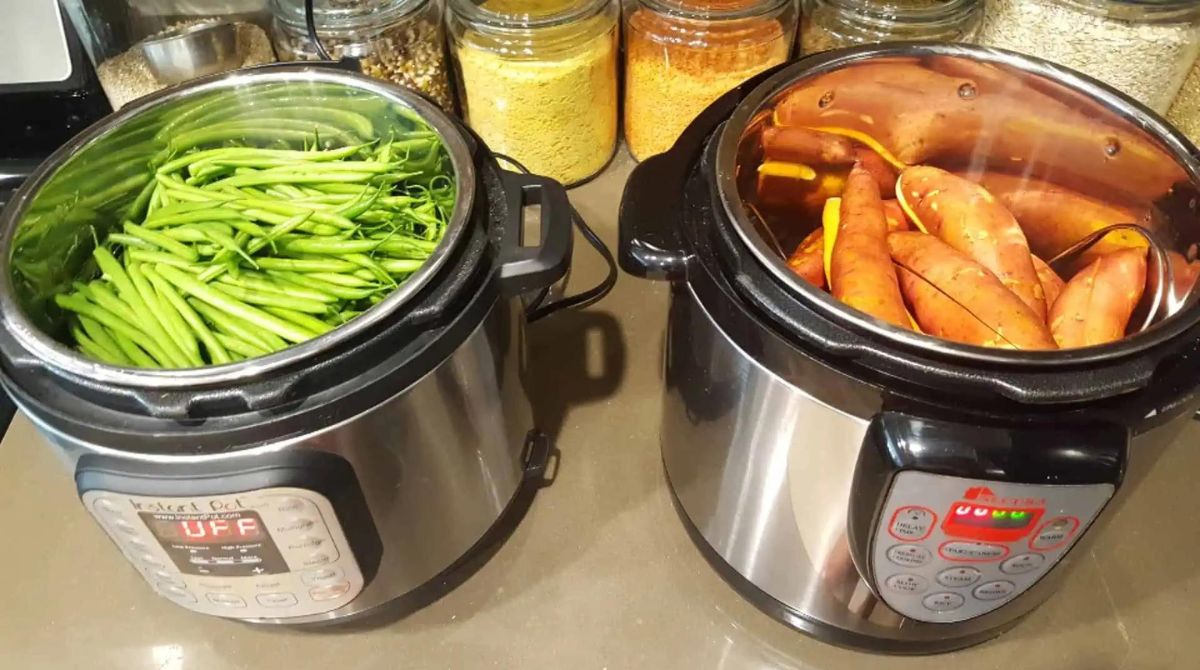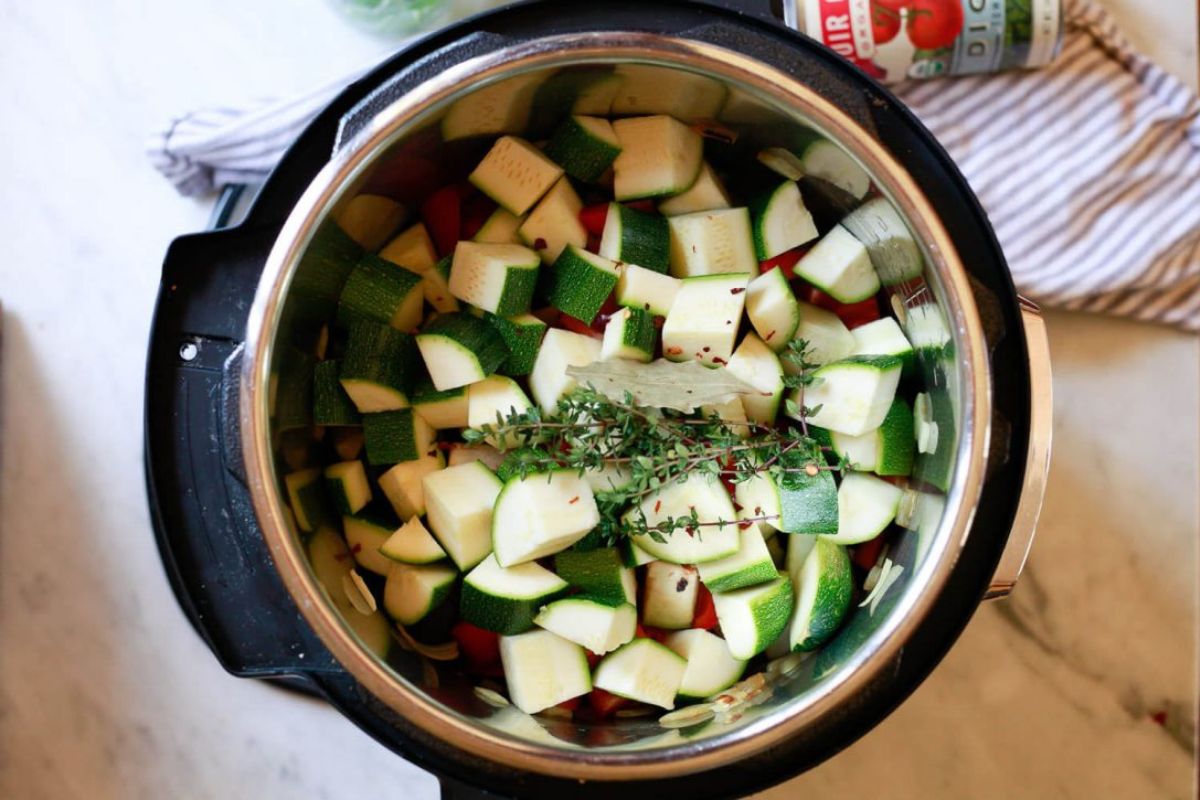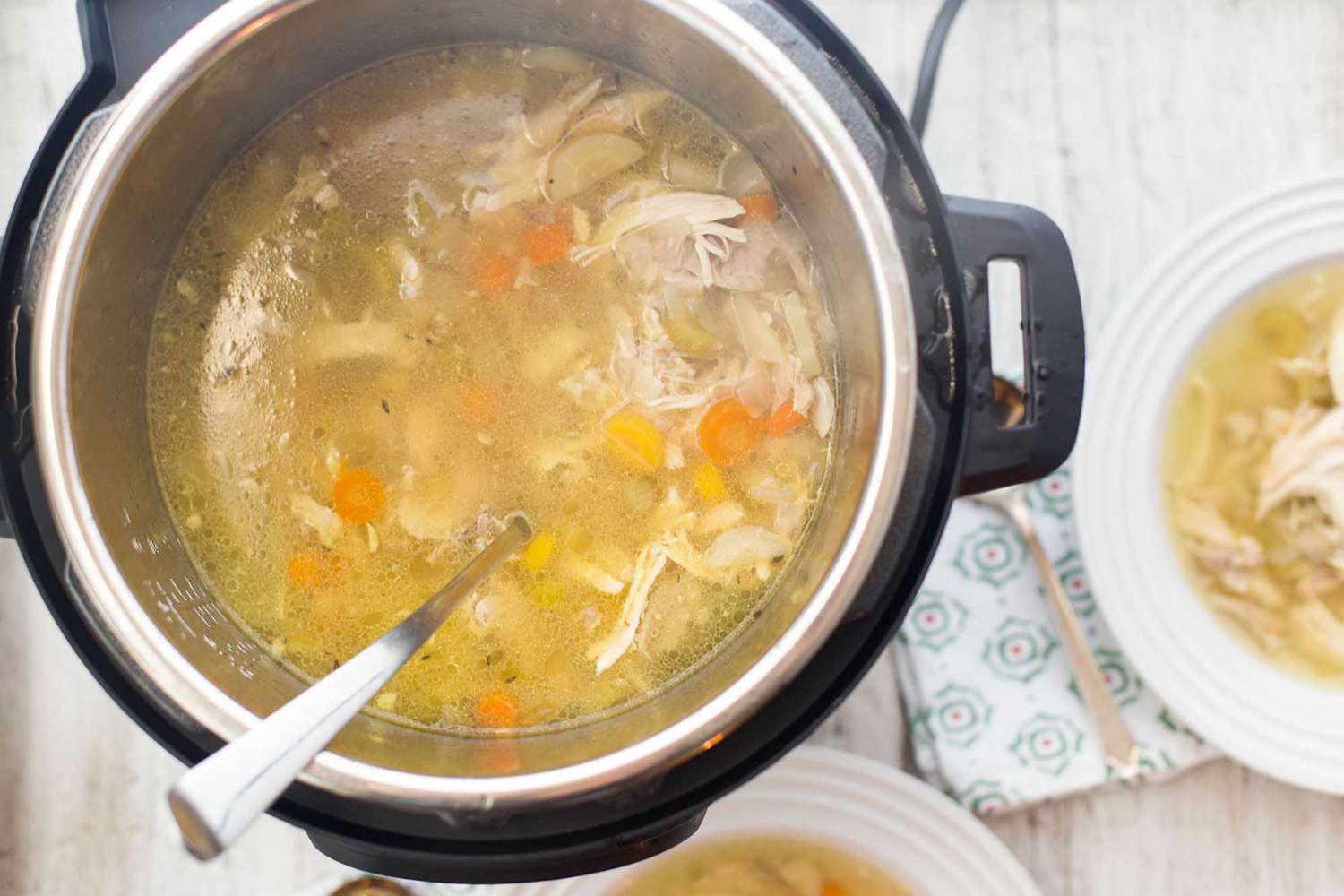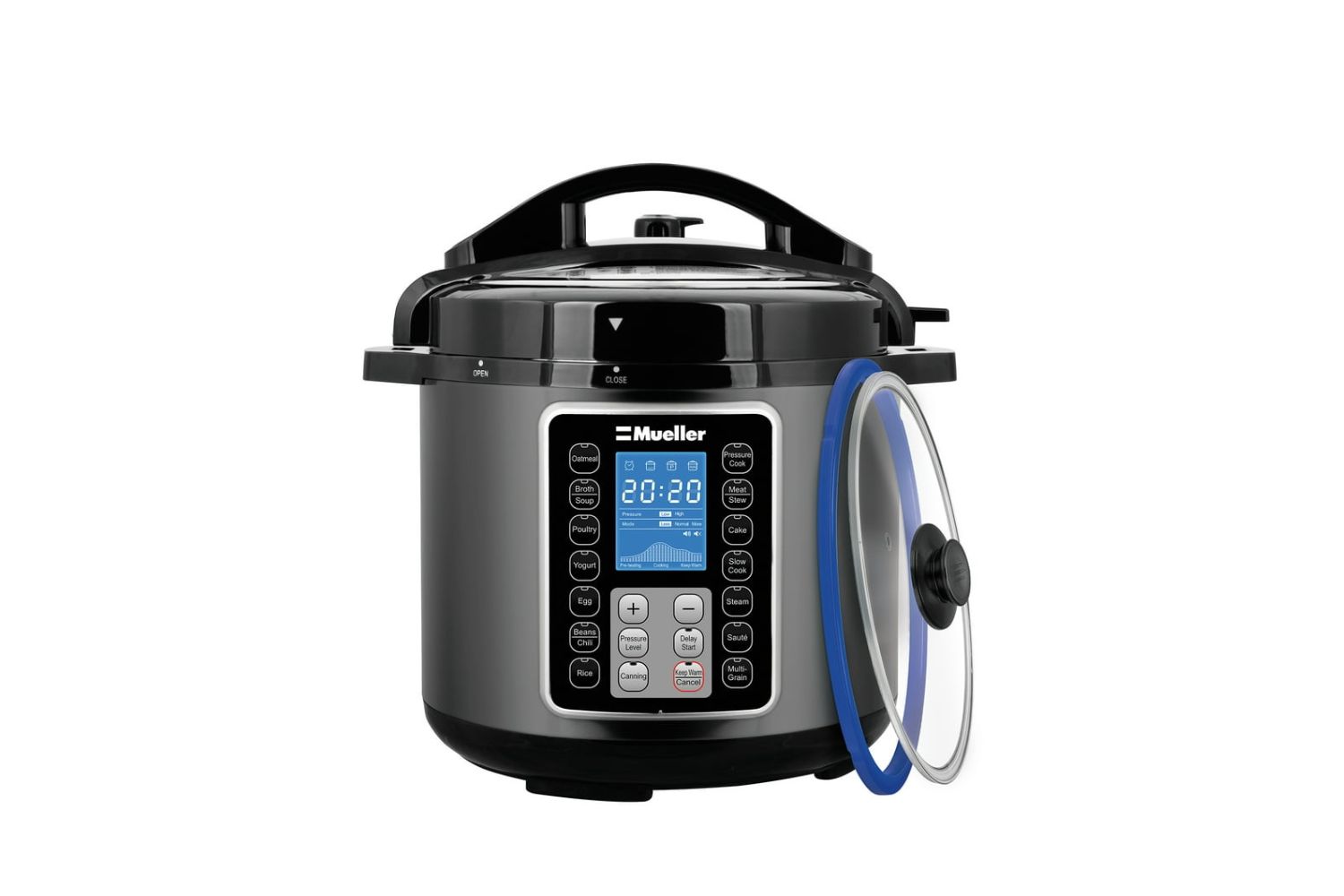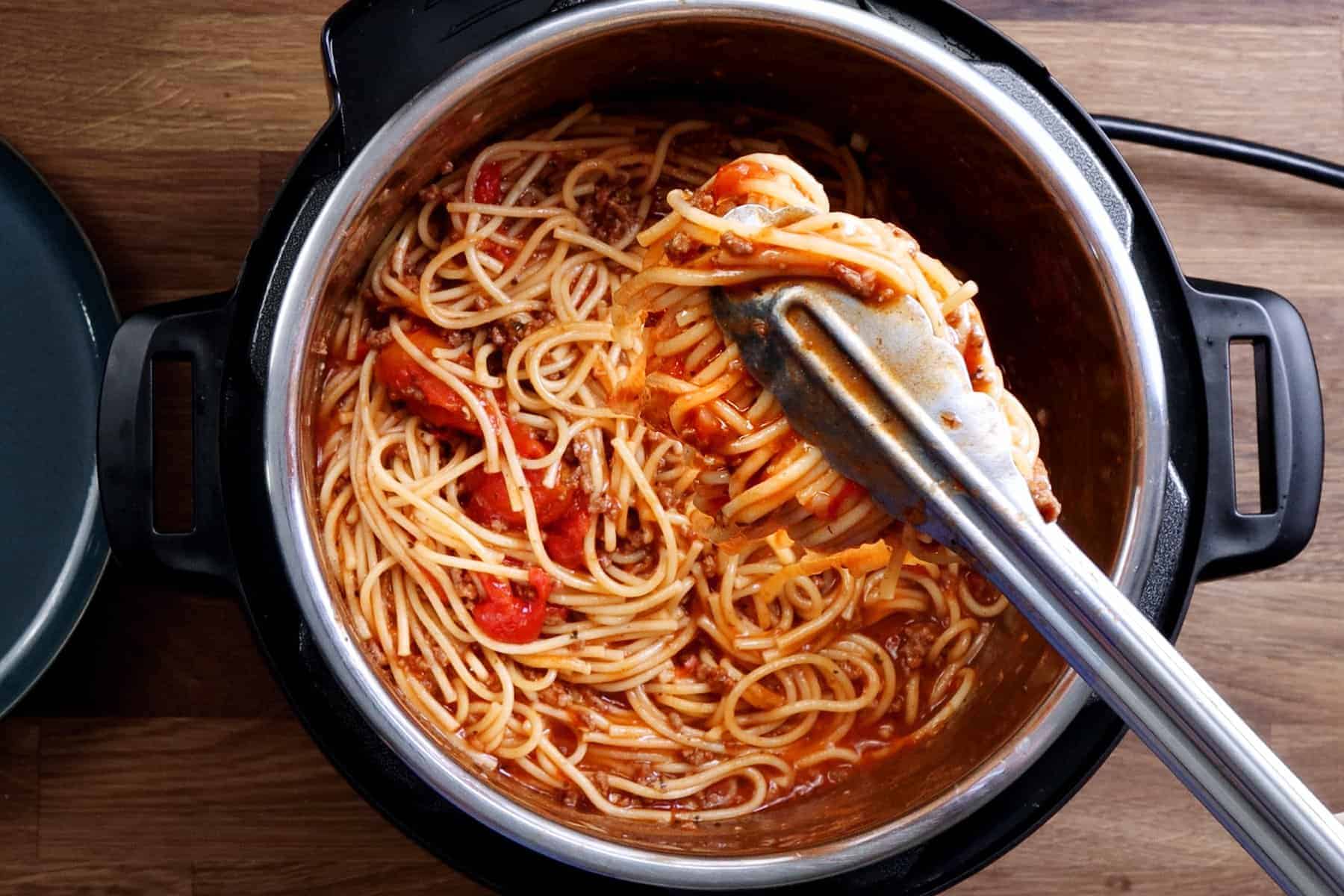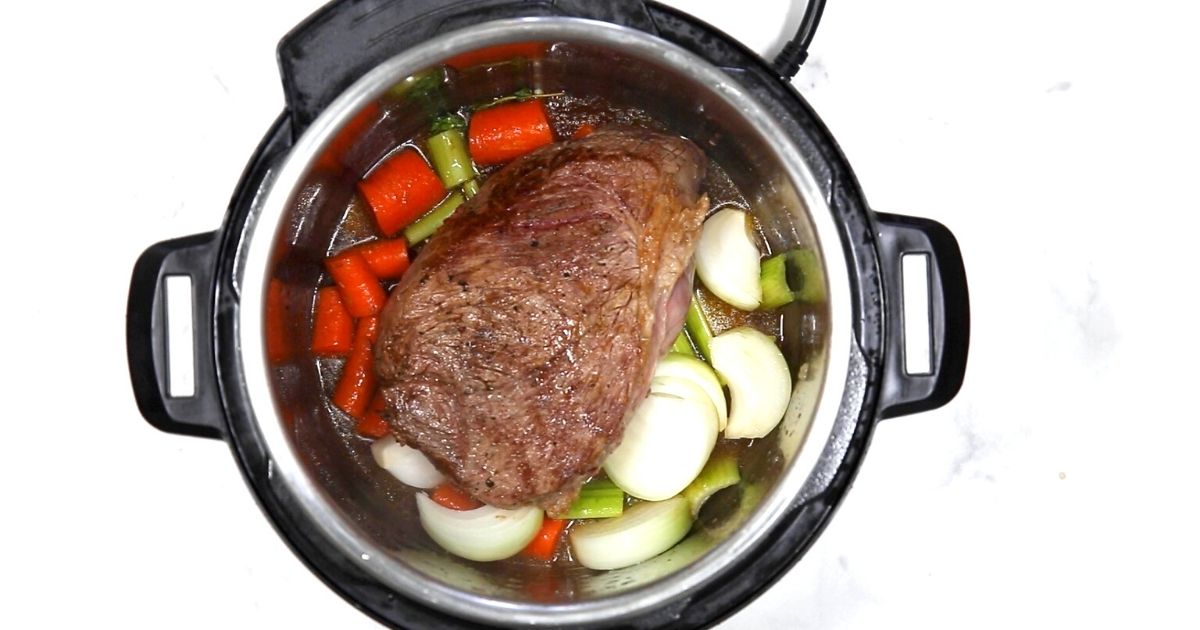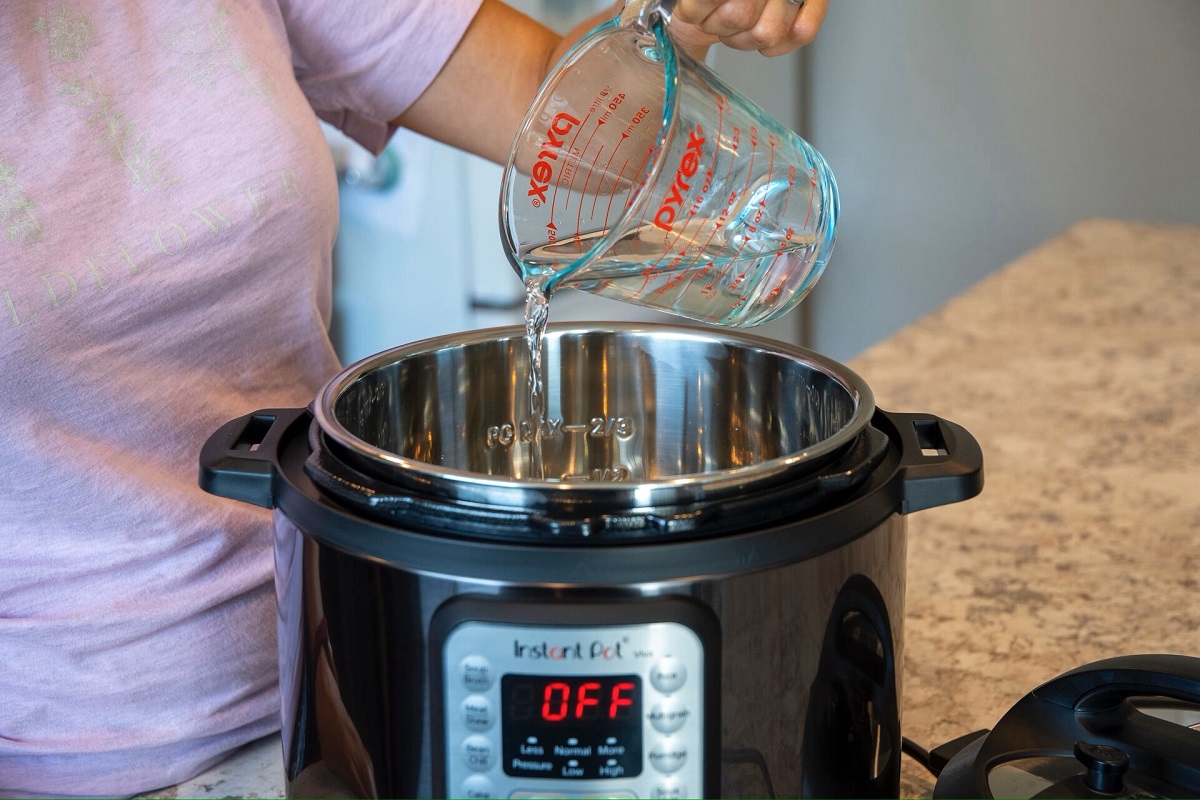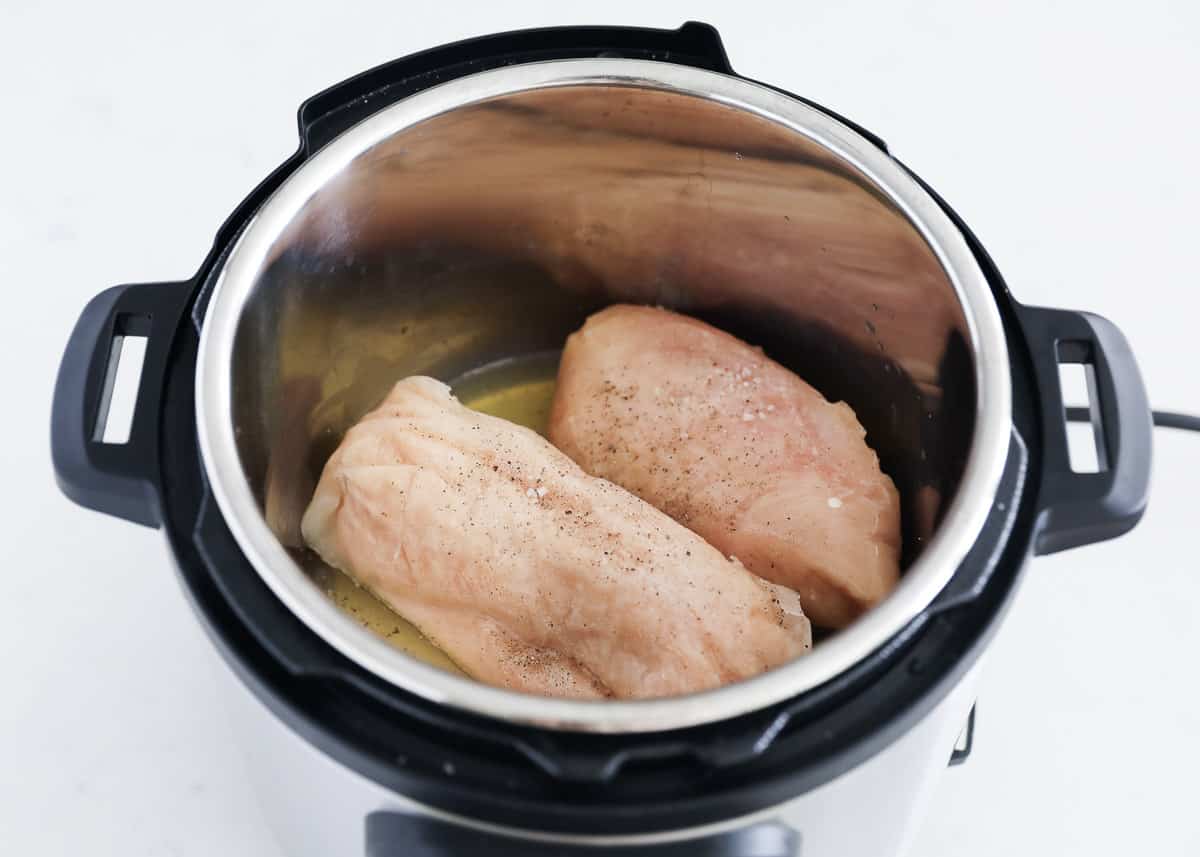Introduction
Welcome to the world of electric pressure cooking! If you’re looking for a convenient and efficient way to cook vegetables, an electric pressure cooker is the perfect kitchen appliance for you. Whether you’re a seasoned cook or just starting out, an electric pressure cooker can revolutionize the way you prepare vegetables. In this article, we will explore the benefits of using an electric pressure cooker for vegetable cooking, provide a guide on the best vegetables to cook in a pressure cooker, share tips for preparing and cooking vegetables, and even include some delicious recipes to get you started.
An electric pressure cooker is a versatile appliance that utilizes pressure and steam to cook food quickly and lock in the flavors and nutrients of your favorite vegetables. What makes it even more enticing is its ability to save time in the kitchen. With an electric pressure cooker, you can eliminate the need for multiple pots and pans, cut down on cooking times, and still enjoy delicious and nutritious vegetables.
Not only does an electric pressure cooker save you time, but it also helps to retain more nutrients in your vegetables. The high-pressure environment of the cooker allows for faster cooking times, which means vegetables spend less time exposed to heat and water, preserving their natural vitamins and minerals. Additionally, the sealed environment of the pressure cooker helps to prevent nutrient loss through evaporation.
Another advantage of using an electric pressure cooker for vegetable cooking is that it can tenderize even the toughest vegetables, making them more enjoyable to eat. Tough vegetables like artichokes or root vegetables, which can take a long time to cook using traditional methods, become tender and flavorful in a fraction of the time when cooked in a pressure cooker.
Whether you’re looking to experiment with new vegetable recipes or simply want a fuss-free way to cook your favorite vegetables, an electric pressure cooker is a valuable addition to any kitchen. In the following sections, we will delve deeper into the benefits of using an electric pressure cooker for vegetable cooking, explore the best vegetables and cooking times, and provide helpful tips and recipes to ensure your vegetable dishes turn out perfect every time.
Benefits of Using an Electric Pressure Cooker
Using an electric pressure cooker to cook vegetables comes with a myriad of benefits that make it a game-changer in the kitchen. Let’s explore some of the key advantages:
- Time-saving: One of the biggest advantages of using an electric pressure cooker is its ability to significantly reduce cooking times. Vegetables that would normally take hours to cook can be ready in a matter of minutes. This makes it a great option for busy individuals or families looking for quick and easy meal solutions.
- Retains nutrients: Traditional cooking methods often result in the loss of nutrients due to prolonged exposure to heat and water. However, the high-pressure environment of an electric pressure cooker helps to retain more nutrients in the vegetables. This means that your meals not only taste great but also provide a higher nutritional value.
- Tenderizes tough vegetables: Some vegetables can be tough and require long cooking times to become tender. With an electric pressure cooker, you can transform even the toughest vegetables, such as artichokes or root vegetables, into tender and delicious dishes in a fraction of the time.
- Enhances flavors: The sealed environment of an electric pressure cooker traps the flavors and aromas of the vegetables, resulting in more flavorful dishes. Additionally, the pressure cooking process allows the flavors to penetrate deep into the vegetables, ensuring a tasty and satisfying meal.
- Energy-efficient: Electric pressure cookers are designed to be energy-efficient, consuming less power compared to traditional cooking methods. This not only saves you money on your energy bills but also helps reduce your carbon footprint.
- Multifunctional: Many electric pressure cookers come with a variety of cooking functions, allowing you to not only cook vegetables but also prepare a wide range of other dishes. From soups and stews to rice and even desserts, these versatile appliances can handle it all.
As you can see, utilizing an electric pressure cooker for vegetable cooking provides numerous benefits, from saving time and energy to retaining nutrients and enhancing flavors. So, if you’re looking to streamline your cooking process and elevate your vegetable dishes, investing in an electric pressure cooker is definitely worth considering.
Best Vegetables for Pressure Cooking
When it comes to pressure cooking vegetables, not all vegetables are created equal. Some vegetables lend themselves exceptionally well to this cooking method, while others may not yield satisfactory results. Here are some of the best vegetables for pressure cooking:
- Root vegetables: Root vegetables like potatoes, carrots, beets, and turnips are perfect candidates for pressure cooking. They can be cooked to perfection in a fraction of the time it takes using conventional cooking methods. Plus, the high pressure helps to break down their fibrous texture, resulting in tender, flavorful veggies.
- Cauliflower and broccoli: These cruciferous vegetables are ideal for pressure cooking as they retain their shape and texture while getting perfectly cooked. The pressure cooking process helps to soften their tough fibers while preserving their vibrant color and nutrients.
- Green beans: Green beans can often become overcooked and lose their vibrant green color when using traditional cooking methods. Pressure cooking ensures they retain their crispness and bright color, making them a delicious and visually appealing addition to any meal.
- Artichokes: Artichokes can be time-consuming to cook, but with a pressure cooker, you can have tender and flavorful artichokes in no time. The high-pressure environment helps break down their tough leaves and results in a deliciously soft heart.
- Sweet potatoes: Sweet potatoes, with their dense texture and natural sweetness, are well-suited for pressure cooking. They cook evenly and quickly in the pressure cooker, making them an excellent choice for a nutritious and satisfying side dish or even as a base for a hearty soup.
- Winter squash: Varieties like butternut squash and acorn squash benefit greatly from pressure cooking. The pressurized environment allows the flavors to infuse more deeply, resulting in tender and flavorful squash that can be enjoyed on its own or used in various recipes.
These are just a few examples of the best vegetables for pressure cooking. However, the beauty of using an electric pressure cooker is that you can experiment with different vegetables and discover your own favorites. Just remember to adjust the cooking times and pressure settings based on the vegetable you’re cooking to achieve optimal results.
Now that we have identified the best vegetables for pressure cooking, let’s move on to the next section, where we will explore how to prepare the vegetables for pressure cooking.
Preparing Vegetables for Pressure Cooking
Properly preparing your vegetables is essential for achieving delicious and perfectly cooked results in your electric pressure cooker. Follow these steps to ensure your vegetables are prepped and ready for pressure cooking:
- Cleaning: Start by cleaning your vegetables thoroughly under running water. Remove any dirt or debris using a brush or your hands. Trim and discard any damaged or discolored parts of the vegetables.
- Peeling and chopping: Depending on the vegetable and your preference, you may need to peel or chop them before pressure cooking. Potatoes, carrots, beets, and similar root vegetables can be peeled and chopped into desired sizes. Leafy greens like spinach or kale can be roughly chopped to promote even cooking.
- Removing seeds and membranes: For vegetables like bell peppers or chili peppers, it’s important to remove the seeds and membranes before pressure cooking. This prevents the dish from becoming excessively spicy or bitter. Cut the peppers in half, remove the seeds and membranes, and then proceed with chopping if needed.
- Properly sizing: To ensure even cooking, cut your vegetables into similar-sized pieces. This helps to ensure that all the vegetables cook at the same rate, avoiding some being undercooked while others are overcooked.
- Marinating: While not necessary for all vegetables, marinating can infuse extra flavor into your dishes. Consider marinating your vegetables in a mixture of your choice, like olive oil, herbs, spices, and a dash of acidity, for about 15-30 minutes before pressure cooking.
- Using a steamer basket: When pressure cooking vegetables, using a steamer basket can help prevent them from getting too mushy. Place the vegetables in the basket instead of directly in the water, as this allows them to cook in the steam generated by the pressure cooker.
- Adding liquid: Unlike other pressure cooking recipes that require a significant amount of liquid, vegetables usually release their own moisture. However, adding a small amount of liquid, such as water or vegetable broth, can help create steam and enhance the cooking process.
By properly preparing your vegetables before pressure cooking, you ensure even cooking, enhanced flavors, and a pleasant texture in your final dishes. Now that you know how to prepare your vegetables, let’s move on to the next section to learn about the cooking times and pressure settings for different vegetables.
Cooking Times and Pressure Settings for Different Vegetables
Getting the cooking times and pressure settings right is crucial for perfectly cooked vegetables in your electric pressure cooker. The following are general guidelines for cooking some common vegetables, but remember to adjust them based on the specific model of your pressure cooker and personal preferences:
- Root vegetables: Potatoes, carrots, beets, and turnips typically require 10-15 minutes of cooking time at high pressure.
- Cauliflower and broccoli: These vegetables cook quickly and usually require 3-5 minutes of cooking time at high pressure to retain their texture.
- Green beans: Green beans cook relatively fast and usually need 3-4 minutes of cooking time at high pressure. If you prefer them to be slightly crisper, reduce the cooking time by a minute or two.
- Artichokes: Artichokes take a bit longer to cook and typically require 15-20 minutes of cooking time at high pressure.
- Sweet potatoes: Sweet potatoes usually need 15-20 minutes of cooking time at high pressure to become tender. Adjust the cooking time based on the size and thickness of the sweet potatoes.
- Winter squash: Butternut squash and acorn squash require approximately 10-15 minutes of cooking time at high pressure to achieve a soft and creamy texture.
Keep in mind that these are general guidelines, and cooking times may vary depending on the size, variety, and personal preference for doneness. It’s always a good idea to start with the lower end of the cooking time range and perform a quick release to check if the vegetables are cooked to your liking. You can always return them to the pressure cooker for additional cooking time if needed.
Regarding pressure settings, most vegetables can be cooked at high pressure, which is typically around 10-12 PSI (pounds per square inch). Some pressure cookers have preset settings for specific vegetables, so be sure to refer to your pressure cooker’s manual for more accurate instructions.
Now that you have an understanding of cooking times and pressure settings for different vegetables, let’s move on to the next section, where we will share some valuable tips for achieving perfectly cooked vegetables in your electric pressure cooker.
Tips for Perfectly Cooked Vegetables
Cooking vegetables in an electric pressure cooker can yield delicious and perfectly cooked results. Here are some helpful tips to ensure your vegetable dishes turn out fantastic every time:
- Avoid overcooking: Vegetables can quickly become overcooked in a pressure cooker. To prevent this, it’s important to follow the recommended cooking times and do a quick release for delicate vegetables to preserve their texture and color.
- Use natural pressure release for tougher vegetables: For vegetables that require longer cooking times, like root vegetables or winter squash, it’s best to use natural pressure release (NPR) after the cooking time is complete. NPR allows the pressure to gradually reduce, resulting in more tender and evenly cooked vegetables.
- Season properly: Don’t forget to season your vegetables before pressure cooking to enhance their flavors. Add herbs, spices, salt, or any other seasoning of your choice to infuse your vegetables with delicious taste. You can also season them further after cooking, if needed.
- Experiment with different sizes and cuts: Varying the sizes and cuts of your vegetables can create different textures and cooking times. For example, larger chunks will require more cooking time, while smaller pieces will cook faster. Have fun experimenting to find your preferred style.
- Avoid overfilling the pressure cooker: It’s important not to overfill your pressure cooker when cooking vegetables. Leave enough space for the vegetables to expand and allow for proper heat and pressure distribution. Overcrowding can result in uneven cooking and potential clogging of the pressure valve.
- Add colorful vegetables last: If you’re cooking a mix of colorful vegetables, consider adding the brightly colored ones, like red bell peppers or tomatoes, at the end of the cooking process. This helps preserve their vibrant color and prevents them from becoming overly mushy.
- Utilize the sauté function for extra flavor: Some electric pressure cookers come with a sauté function. You can use this feature to lightly sauté the vegetables before pressure cooking, adding another layer of depth and flavor to your dishes.
- Adjust seasoning and flavors after cooking: Taste your vegetables after pressure cooking and adjust the seasonings or flavors as needed. You can add a splash of lemon juice, a drizzle of olive oil, or a sprinkle of fresh herbs to further enhance the flavors.
By following these tips, you’ll be well on your way to achieving perfectly cooked vegetables that are bursting with flavor and retain their nutritional value. Now, let’s move on to the next section, where we’ll share some delicious recipes for cooking vegetables in your electric pressure cooker.
Recipes for Electric Pressure Cooker Vegetables
Ready to put your electric pressure cooker to work and enjoy some flavorful vegetable dishes? Here are a few delicious recipes to try:
- Garlic Parmesan Green Beans: Place fresh green beans in the pressure cooker with minced garlic, a sprinkle of parmesan cheese, salt, and pepper. Cook for 3-4 minutes at high pressure. Release the pressure and serve these flavorful and tender green beans as a side dish.
- Mashed Sweet Potatoes: Peel and chop sweet potatoes, then place them in the pressure cooker with a cup of vegetable broth. Cook for 15-18 minutes at high pressure. Mash the cooked sweet potatoes with a dash of butter, salt, and a pinch of cinnamon for a delightful and creamy side dish.
- Roasted Root Vegetables: Toss chopped potatoes, carrots, parsnips, and beets with olive oil, garlic powder, rosemary, salt, and pepper. Cook for 10-12 minutes at high pressure. After releasing the pressure, transfer the tender roasted vegetables to a baking sheet and broil for a few minutes to achieve a crispy, caramelized finish.
- Cauliflower Curry: Sauté onions, garlic, and spices in the pressure cooker using the sauté function. Add cauliflower florets, diced tomatoes, coconut milk, and vegetable broth. Cook for 5-6 minutes at high pressure. Serve this flavorful and aromatic cauliflower curry over steamed rice or with naan bread.
- Stuffed Bell Peppers: Cut the tops off bell peppers and remove the seeds and membranes. Stuff them with a mixture of cooked quinoa, sautéed vegetables, and grated cheese. Place the stuffed peppers in the pressure cooker with a layer of tomato sauce at the bottom. Cook for 8-10 minutes at high pressure. Serve these delicious and nutritious stuffed bell peppers as a satisfying main dish.
These recipes provide just a taste of what you can create with your electric pressure cooker and vegetables. Feel free to adjust the seasonings and ingredients to suit your preferences and dietary needs.
Now that you have some appetizing ideas, it’s time to get creative in the kitchen and enjoy the versatile and flavorful vegetable dishes made possible by your electric pressure cooker.
Before we wrap up, let’s summarize the key points and tips covered in this article.
Conclusion
Using an electric pressure cooker to cook vegetables provides numerous benefits, from saving time and retaining nutrients to enhancing flavors and tenderizing tougher vegetables. The convenience and efficiency of this kitchen appliance make it an excellent tool for anyone looking to create delicious and healthy vegetable dishes. By selecting the right vegetables, properly preparing them, and adjusting cooking times and pressure settings, you can achieve perfectly cooked vegetables with minimal effort.
Remember to follow the cleaning, chopping, and seasoning steps to ensure your vegetables are ready for pressure cooking. Experiment with different cooking times and pressure settings to find your preferred level of doneness for each vegetable. And don’t forget to utilize the many tips provided to enhance your cooking experience and achieve fantastic results.
Whether you’re cooking root vegetables, cauliflower, green beans, or any other vegetable, the electric pressure cooker simplifies the process while delivering delectable and nutritious meals. The recipes shared in this article serve as a starting point, but feel free to get creative and explore various flavor combinations to suit your taste.
So, get ready to make the most of your electric pressure cooker and enjoy the convenience, versatility, and mouthwatering results it offers when cooking vegetables. Elevate your vegetable dishes and impress your family and friends with the help of this powerful kitchen appliance. Happy cooking!







